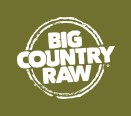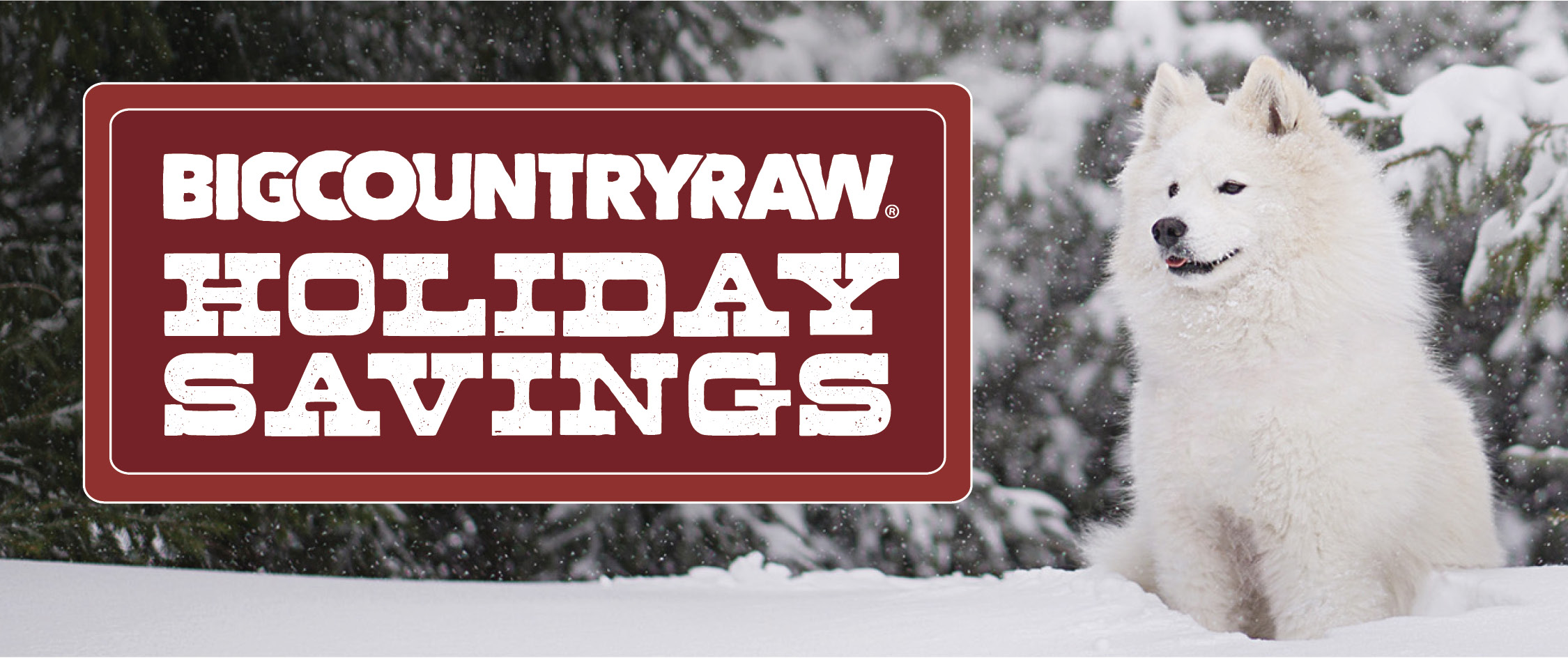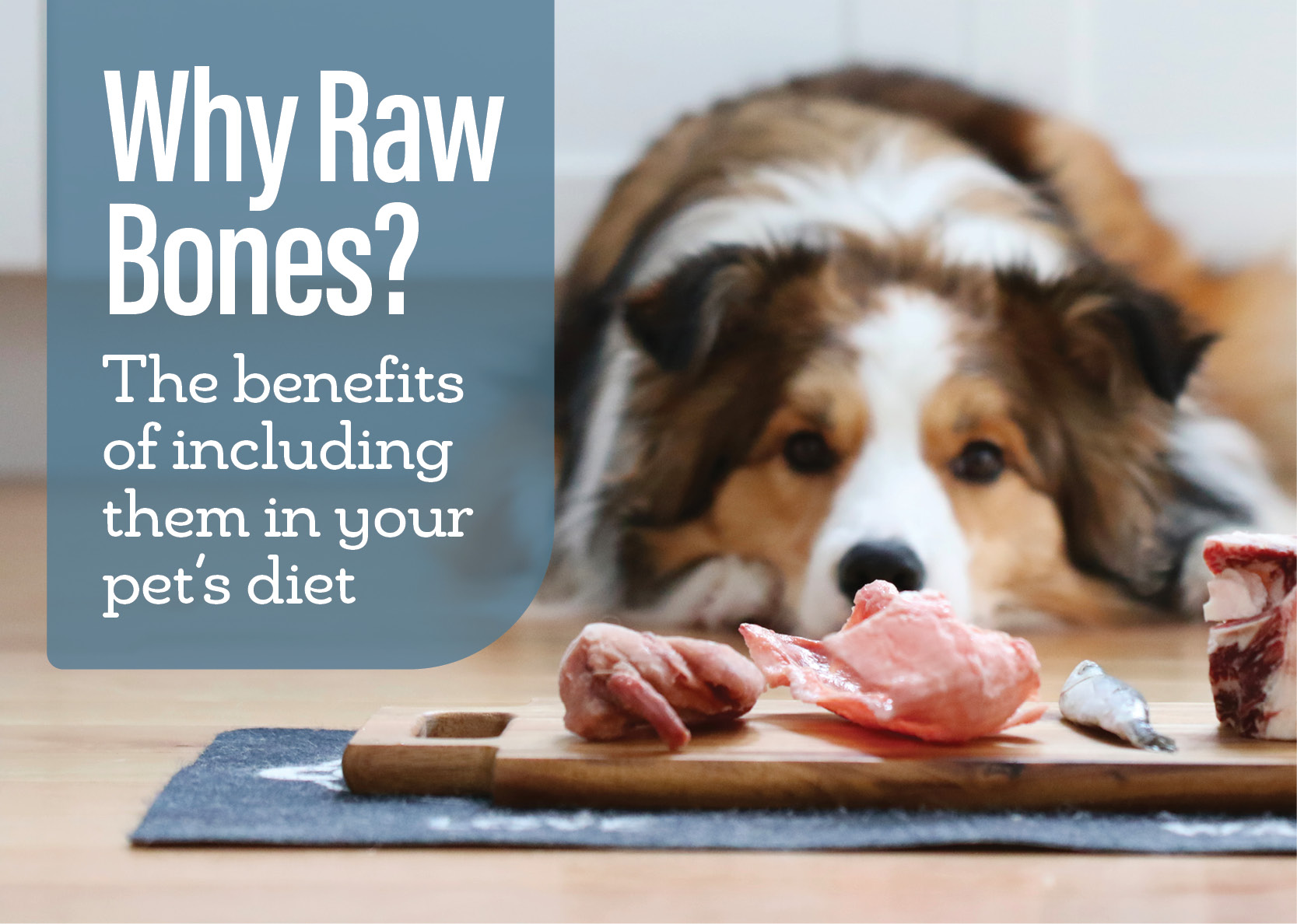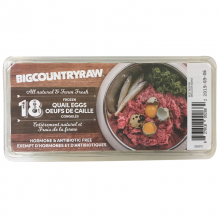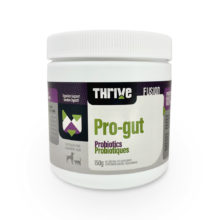Perhaps you’ve seen them in your local pet store’s freezer, or you’re looking for an alternative to expensive dental chews with so many unknown ingredients and want to make a healthier change in your pet’s diet. Whatever the reason, we’re here to answer your questions about bones.
Bones are a crucial ingredient in a balanced raw diet. In fact, they make up roughly 10% of Big Country Raw ground meals, working to ensure that your pet has the calcium their body needs for growth and maintenance of bones and teeth. Considered “nature’s toothbrush” by many raw feeders, keeping your pet’s teeth clean can be as simple as offering 2-3 chewing bones per week – but it’s important to pick the bone that’s right for your pet. In addition to their dental benefit, safely chewing on and eating bones can help relieve stress, offer nutrients benefitting joint health, reduce the risk of kidney disease, and offer mental and physical exercise.
Bones for Healthy Teeth…and Organs
Veterinarians are all too familiar with periodontal disease. It often goes unnoticed by pet owners but the plaque that can build up in a pet’s mouth is loaded with bacteria and can have a huge impact on not just their oral health but the proper functioning of some important organs.
The bacterium in plaque make their way through the bloodstream from the mouth into other organs, namely the kidneys, heart, and liver where they can cause diseased organs. The liver and kidney primarily function to filter the blood and the increased bacteria load can cause them to be over-worked and potentially shut down. The same bacteria found in the plaque of your pet’s mouth threatens heart health with diseases like endocarditis and valvular disease.
What Kind of Bones are Good for Pets?
Only raw or dehydrated bones should ever be offered to pets. Bones cooked at high temperatures and smoked bones can splinter and are not easily digested by our pets. Both dogs and cats can benefit from eating bones. Your pet’s age, breed, chewing tendencies, and chew power, will all need to be considered when deciding which bone is best. Bones are fantastic for puppies! Recreational chewing bones can be a great source of exercise and mental stimulation for growing puppies. They also help to alleviate some of the pain from teething and can reduce stress and anxiety as the act of chewing releases calming endorphins. Flat Rib bones can be served frozen, and puppies love them. Some dogs don’t outgrow the need to chew and will enjoy the benefit of bones well into their senior years.
Why Not Feed Dental Chews?
Aptly named, rawhide does start off as an animal ingredient which can fool some pet parents into believing it’s a natural chew. The truth, however, is that rawhide is one of the most dangerous and chemical-filled “treats” you can offer your dog. There is nothing natural about rawhide which is actually a by-product of the leather industry. The process by which the hide of an animal becomes a rawhide dog treat is loaded with carcinogenic, toxic chemicals like bleach, lye, and even glue. Because the FDA doesn’t consider this product to belong in the “food” category, there are virtually no regulations for its production. Scary, right?
Though the benefit of dental chews on dental health seem to remove plaque build-up, the carbohydrates and sugars found in many of these chews are, in fact, part of the problem. It’s a cycle – the carbohydrates create plaque, and in turn, the pet is fed more dental chews. Because they are heavily processed, a time-consuming and expensive endeavour, the ingredient quality is quite low and loaded with preservatives. A common ingredient in many brands are legumes (such as pea flour) that are known to be anti-nutritional – meaning that they are inhibiting the digestion of needed nutrients.
Most concerning though, is the risk of choking or a bowel obstruction. These chews are so tightly compacted that when swallowed in large chunks, they are virtually undigestible. This is not so with raw bones – a carnivore’s body knows how to digest meat and bone.
What are Some of the Lesser-Known Benefits of Feeding Bones?
In addition to calcium, some bones are great sources of other nutrients. Chicken and Duck feet are high in glucosamine and chondroitin, natural components of cartilage, that are known to help rebuild and repair joints. There is approximately 400mg of glucosamine in each chicken or duck foot. Marrow bones, sold in small and large sizes, are a recreational chewing bone that have a ton of health benefits as well. They contain collagen and glycine to promote muscle and skin health as well as glucosamine and chondroitin for joints. Bone marrow is high in fat so should be fed in moderation.
Bone broth should be considered a canine superfood. The nutrients it contains support gut and joint health, and immune and organ system function. Bone broth is made from raw bones, usually those surrounding joints, and simmered for extended periods of time, to make a nutrient-rich, gelatinous broth which can be frozen or jarred and served as a treat or meal topper.
Can You Feed Too Many Bones?
Ideally, you want the bulk of your pet’s meals to be a balanced Big Country Raw diet to ensure all their nutritional needs are being met. We suggest bones can make up 10%, or in some cases up to 20% of their overall diet, depending on the pet and their unique needs. The effect of too much bone (calcium) in the diet, is often seen in the form of constipation or overly dry stool. A normal raw-fed stool is firmer than that of a kibble-fed pet but if the stool is white or your pet is having considerable trouble, it’s important to reduce the bone intake. A couple reduced bone meals (a quail egg to replace some of the meal), some added Beef Organ Blend or Thrive Pumpkin Powder can help get things moving normally again. Every pet’s calcium needs differ, so it’s important to monitor their stools frequently.
What if my Pet has Never Eaten Bones Before?
It’s never too late to reap the rewards that raw bones can offer – and one of the great things is that even kibble-fed pets usually have no trouble enjoying raw bones. Experienced raw feeders will often feed bones frozen (they’re handy to use as a meal if you forget to thaw food the day prior), but if your pet isn’t used to cold food, thawing to room temperature can be helpful to keep them from regurgitating.
If your pet is a very eager eater, or swallows without chewing, holding the bone during chewing is a way to teach them to slow down and savour the chewing experience. For senior pets being introduced to bones, they may lack some of the proper digestive enzymes for a raw bone so Thrive Pro-gut would be a great addition to the meal fed prior to the bone or even sprinkled on the bone directly.
Big Country Raw is excited to offer two new Meal Replacement bones! A Large Turkey Neck and Lamb Necks in a 2lb bag are sure to please your medium to extra-large breed dogs. Add them to your meal rotation for your dog’s maximum satisfaction.

The above bone suitability chart is intended to be a guide. Your individual pet’s optimal bone choices may be different than suggested.
Bones, in their raw, unprocessed, natural state, whether fed whole or ground up, are essential to a complete and balanced raw diet. They bring more to the health of your pet than just the calcium they provide. Different types and sources of bones offer a unique set of benefits ranging from dental, joint, and even organ health. Bone chewing is beneficial for dogs and cats of all breeds and life stages, particularly puppies. With bones, a little goes a long way, and offering as few as 2-3 raw bones weekly can have positive effects on your pet’s overall health and wellness, both physical and mental. As with any other food choice, it’s important to feed the pet in front of you, being aware of their specific needs and behaviours when choosing an appropriate bone. Remember to always supervise chewing sessions.
A Few Things to Remember
– Always supervise bone chewing sessions: Safe chewing technique for meal replacement bones should involve the use of the whole mouth including back molars, chewing side to side breaking the bone down thoroughly before consuming.
– It is beneficial to train your pet to allow you to take away a bone when it becomes too small and could be a choking hazard.
– When feeding meal replacement bones, be sure to calculate them as part of their daily food allowance.
– A general rule of thumb: Smaller bones for smaller pets, larger bones for larger pets. If in doubt, size up to avoid the risk of choking.
– Bones are a high source of calcium, which has a firming effect on stools. Monitor stools regularly for signs of constipation.
– There are inherent risks to our pets eating bones, or other things such as hard toys, for that matter. Chipped teeth, and intestinal blockages, though uncommon, can happen and require immediate veterinary attention.
